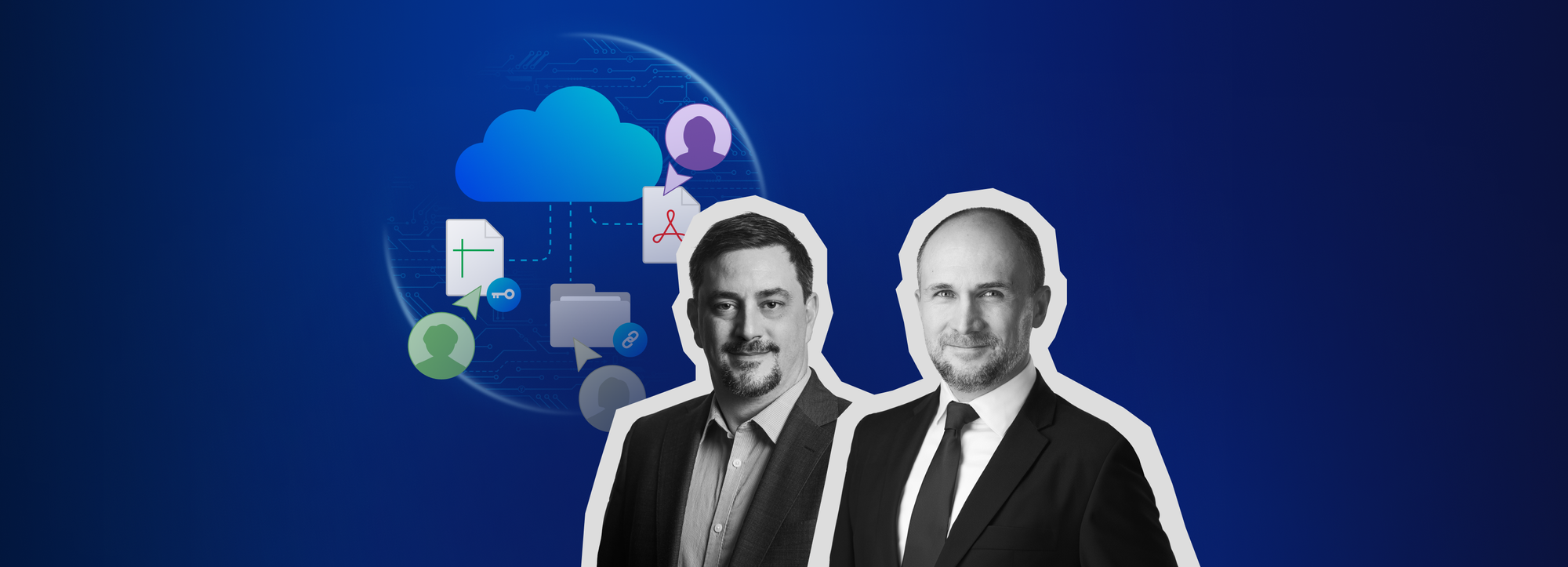Cybersecurity monitoring: top threat monitoring tools and tactics to keep you safe

The British Library, renowned for housing some of the oldest and most revered books and manuscripts in history, has recently made headlines for a very 21st-century reason: falling victim to a ransomware attack. The hack, which took place on October 31, not only crippled its online systems and services but also led to a leak of employee data. This included passport scans that ended up on the dark web for the highest bidders to buy.
According to the Financial Times, fully restoring the British Library catalog could take over a year, not to mention some 40% of the institution’s reserves. The cyber assault on the UK’s premier research body underlines the risks of relying on a single entity for essential services, warns the newspaper. Another thing the attack highlights, however, is that when it comes to cybersecurity, prevention is the best defense.
In this article, we’ll discuss the importance of cybersecurity monitoring and response in bulletproofing your IT infrastructure against online threats – well before they materialize.
Read on to find out what cyber monitoring is, how it works, and what cybersecurity intrusion detection tools and best practices you can implement to bolster your security posture.
What is cybersecurity monitoring? Definition and key facts
Cybersecurity monitoring refers to the real-time or near-real-time monitoring of events and activities taking place across your network. It enables organizations to ensure that security controls protecting the integrity, confidentiality, and availability of your data assets aren’t compromised as well as to detect and address any threats or vulnerabilities before they turn into a data security incident.
It’s key to remember that cyber threat monitoring, real-time or near-real-time, is a dynamic process, the National Institute of Standards and Technology (NIST) warns. This means that organizations need to actively manage it to keep up with a fast-evolving cyber risk landscape on the one hand and with constant changes in their own enterprise architecture and operational environment on the other.
The US federal agency also points out that ongoing monitoring is a critical component of enterprise risk management frameworks and calls for the implementation of a comprehensive information security continuous monitoring (ISCM) strategy. That is, the maintenance of “ongoing awareness of information security, vulnerabilities, and threats to support organizational risk management decisions.”
How does cybersecurity threat monitoring work? Here’s an example
Continuous cybersecurity monitoring is in fact a circular process. “Organizations increase situational awareness through enhanced monitoring capabilities and subsequently increase insight into and control of the processes used to manage organizational security. Increased insight into and control of security processes in turn enhances situational awareness,” NIST explains in Special Publication 800-137, providing the following example.
Security information about a system component inventory can be used to confirm compliance with CM-8 Information System Component Inventory. First, information is assessed to find out if the control is effective (that is, if the inventory is accurate). If it turns out not to be, an analysis is conducted to identify the root cause. This might be something innocuous, like an outdated process for connecting components to the network, or something far more concerning, like a cyber attack. Based on the analysis, responses are initiated as appropriate. For example, responsible parties update the inventory, relevant organizational processes are revised, employees receive training, or errant devices get disconnected.
The security-related information about the system component inventory can also be used to support predefined metrics. More accurate system component inventories can help organizations improve the effectiveness of various security domains, such as patch management or vulnerability management. In other words, data collected in assessing a security control can be leveraged to calculate a metric and provide input into a range of organizational processes. Not to mention that a problem, once detected, can prompt the assessment of other controls across the organization, updates to relevant security-related information and improvement in compliance with security programs.
IT security monitoring in the workplace: why it’s more important than ever
According to Gartner, 91% of businesses are engaged in some form of digital initiative, and 87% of senior leaders see digitalization as a company priority. Almost every business today uses customer relationship management, resource planning, project management, marketing automation, or content management software.
On top of that, the coronavirus pandemic has given a tremendous boost to the adoption of technologies for remote working, including video conferencing, project tracking, file sharing, and collaboration tools. As of May 2020, three-quarters of UK office workers had to use at least two new types of technology for work, Deloitte found.
This level of remote connectivity among organizations and external collaborators, be they employees or vendors, is bound to create network and endpoint security gaps. And with them comes a stronger need for effective enterprise cybersecurity monitoring and operations, ensuring visibility into users, devices, data, and activities within corporate networks.
3 key challenges in business internet security monitoring
Endpoint monitoring aside, continuous monitoring presents quite a few challenges for security teams. Let’s see some of the most pressing ones, courtesy of Cisco and Enterprise Strategy Group (ESG).
1. Increasing number and sophistication level of cyber attacks
In 2022, the FBI received 800,944 cyber crime complaints from the public, with potential losses exceeding $10 billion. In 2021, the same number was $6.9 billion. Besides the “usual suspects,” such as ransomware and business email compromise schemes, cryptocurrency-related scams are now among the most-reported incidents.
2. Rapidly growing network traffic to keep a close eye on
According to global telecommunications market research firm TeleGeography, internet bandwidth was up by 28% in 2022 and is now standing at 997 terabits per second. Meaning that global internet bandwidth has almost tripled since 2018, pushing us ever-so-close to the era of networking measured in petabits per second.
3. Network blindspots created by internal and external factors
Seventy-three percent of IT and security professionals think network security has become more difficult due to a lack of visibility into public cloud traffic, user behavior, networks residing in remote locations as well as traffic from non-corporate devices, between the organization and its business partners, and on the internal wireless network.
The 6 steps of building a cybersecurity threat monitoring program
NIST recommends the following steps for developing and implementing your ISCM strategy.
- Assess your organization’s risk tolerance and devise your strategy accordingly. Make sure that it gives you ample visibility into assets, vulnerabilities as well as up-to-date information on potential threats and their impact.
- Devise an ISCM program that lays out metrics, status monitoring frequencies, and control assessment frequencies as well as an ISCM technical architecture, including tools, technologies, and methodologies, manual or automated.
- Implement an ISCM program and gather the security-related information required for predefined metrics, assessments, and reporting from people, processes, technologies, as well as any existing relevant security control assessment reports.
- Analyze the data collected and report the findings to relevant personnel so they can make informed decisions on how to handle potential risks. It may be necessary to gather additional information to clarify or supplement existing monitoring data.
- Respond to findings at all tiers in line with your organization’s risk tolerance. Responses may include risk mitigation, risk acceptance, risk avoidance or rejection, or risk sharing or transfer.
- What’s crucial to remember about continuous monitoring in cybersecurity is that it’s anything but a static or one-and-done affair. Review and update your ISCM program to maintain visibility into assets and vulnerabilities and boost organizational resilience.
Cybersecurity monitoring tools and techniques: the essential list
Here are some of the most effective cyber threat monitoring tools that no cyber-conscious organization should be without in 2024.
1. Security Information and Event Management (SIEM) systems are critical to an effective cybersecurity monitoring strategy, offering real-time analysis of security alerts from applications and network hardware and ensuring quick detection and mitigation of potential threats.
2. Endpoint Detection and Response (EDR) tools act as security guards for network endpoints, such as laptops, mobile devices, or servers, collecting data and looking for indicators of compromise, from suspicious IP addresses to URLs.
3. Email encryption tools are used to make sure that the content of your emails remains confidential and can only be read by the intended recipients, significantly reducing the risk and potential impact of data breaches and leaks.
4. End-to-end encrypted collaboration tools like Tresorit ensure that data is encrypted at one end, and not decrypted until it reaches the intended recipient, maintaining the confidentiality and integrity of the data and the security of remote working environments.
5. Intrusion Detection Systems (IDS) continuously monitor network traffic for signs of malicious activity or policy violations. They alert system administrators to suspicious events, allowing for timely intervention to prevent potential breaches.
6. Vulnerability assessment tools are essential for identifying, quantifying, and prioritizing vulnerabilities in an organization’s systems. By regularly scanning for weaknesses, businesses can proactively address potential threats before they can be exploited.
7. Penetration testing tools are used to perform ethical hacking exercises where a cyberattack is simulated on a computer system. This way, organizations can detect security misconfigurations and vulnerabilities, and enhance their overall security posture.
Key attack entry points and how automated cybersecurity detection can secure them
By analyzing network traffic and system behavior, cybersecurity threat detection tools can spot anomalies that may indicate a cyber attack. Think suspicious IP addresses, unusual login attempts, or access to restricted files. They’re often coupled with automation capabilities, enabling prompt action against identified threats, potentially stopping a breach in its tracks.
The effectiveness of these mechanisms largely depends on the robustness of your security monitoring plan. This plan should define how cybersecurity threat detection automation tools find and respond to threats, including which behaviors and activities to monitor, what thresholds should trigger an alert, and what actions to take when a potential attack is detected.
For instance, a security monitoring plan might include monitoring attempts to access restricted files or making repeated login attempts from a single IP address – both potential signs of a cyber attack. In the case of a detected threat, automated actions could range from blocking the suspicious IP address to sending immediate alerts to relevant personnel.
3 cybersecurity monitoring best practices for 2024
1. Automate, automate, and automate some more
Wherever possible, look for automated solutions to make your cybersecurity threat monitoring efforts more effective, reliable, and cost-efficient. These tools can easily spot trends, patterns, and correlations that human analysts might miss, especially when vast volumes of security-related information need to be collected, analyzed, and interpreted (for example, when checking technical settings on individual network endpoints).
2. Turn employees into your strongest allies
People are just as vital to a well-oiled continuous cybersecurity monitoring strategy as tools and processes. A workforce that understands cybersecurity risks and how they can affect them and the entire organization is more likely to install system and application updates on a regular basis, stay alert to suspicious network activity, and know exactly what steps to take in response to a potential attack.
3. Mind your metrics – and their frequencies
Make sure that the metrics used to assess and manage risk are selected based on specific objectives that will maintain or improve your security posture. It’s also important to define monitoring frequencies at which metrics should be revised. For example, logical asset information can change from one day to another, while network connectivity policies and procedures are usually subject to annual review only.






